Optimum sculling oar length
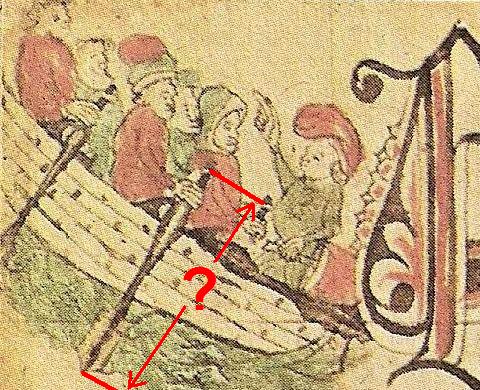
I'm often asked the question: "What is the optimum sculling oar
length for
this or that of Your boats?"
I have two answers:
- A simple one.
- An elaborate one.
The simple answer
A suitable sculling oar length for any boat is two times the beam at
the oarlocks.
This rule is excellent in that it is very easy to apply and equally easy to
remember.
Besides, it gives very good results.
If You are buying for oars, and no exact standard length exists, choose
the next shorter one.
The elaborate answer
To cut a long story short... In the end this story will boil down to:
- If You are a strong rower, and/or for calm and flat conditions, select
the oar length between the pale blue and red lines in the following
graph.
- If You are not that strong, and/or for wind and waves, select the oar
length between yellow and black lines.
- All based on the boat beam at the oarlocks, or oarlock separation.
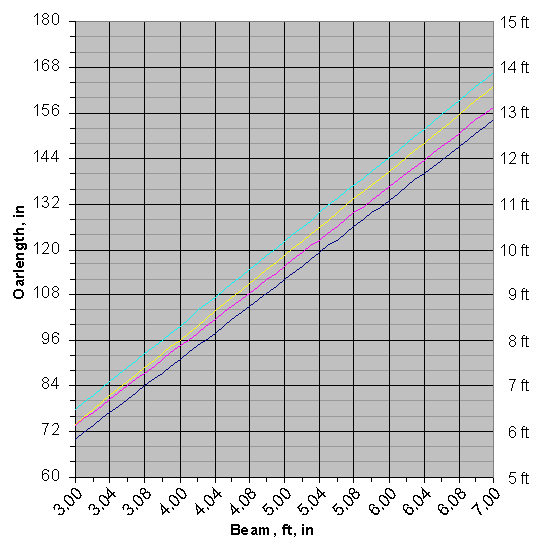
And the same in metric:

But let's go all the way...
Oar length calculations can be based on two figures:
- Oar gearing: Ratio of the length of the outboard portion of the oar
to the length of the inboard portion.
- Length of the inboard portion of the oar loom.
Once You have figured out good values for both, the oar length can
be calculated as:
oar length = ( 1 + gearing ) * inboard length
Oar gearing
Let's start with oar gearing.
The gearing is calculated by dividing the outboard length of
an oar by its inboard length. Or the ratio between outboard length
and the inboard length.
The borderline between the inboard and outboard being the oarlock.
Yes, yes, yes! Of course this is a simplification. The forces aren't
really applied to the very ends of the inboard and outboard, but some
distances towards the oarlock. And these distances probably vary throughout
the sculling stroke, and from stroke to stroke.
But this is not a place for rocket science! Simplification will get us close
enough to the moon.
If You want to read the more complete and complicated story, read the
Atkinsopht Rowing
Computer Research pages.
An oar can be thought of as a lever, pivoted at the oarlock.
If You apply force to one end of a lever, the lever
transforms this force to another force at the other end of the lever.
Similarly, if You move one end of a lever by a distance, the lever
transforms this distance to another distance at the other end.
When You pull on the oar handle,
the oar transforms Your pulling force to the outer end of the oar.
The force at the outer end is Your pulling force divided by the gearing.
And the distance the outer end of the oar travels, is the distance You pulled the handle
multiplied by the gearing.
What are the considerations behind these forces and distances?
- Your pulling force is related to Your physics, of course.
- The force at the outer end of the oar is the force actually moving the boat.
So You would probably like to maximize it, to attain maximum boat speed,
so You would like to minimize the gearing.
- Your handle pulling distance is limited by Your body measurements and measurements
of the boat.
- The distance moved by the outer end of the oar is the distance the boat moves
at every stroke.
So You would probably want to maximize it,
again to attain maximum boat speed,
so You would like to maximize the gearing.
(Yes, of course the blade does not have 100 % grip of the water, there
is slippage. But again, this is a simplification.
Not an oversimplification, however!)
So what happens at different values of the gearing?
Low gearing
At low gearing, a short oar outboard compared to the inboard:
- The force at the oar blade is high.
- So You would think You can row fast.
- But the distance the boat travels at every stroke is short.
- So to row fast You have to row more strokes per minute.
- Which wears You down.
- However if slower pace is ok, You have great force to go against wind or waves.
- But there's really no way to row fast.
High gearing
At high gearing, a long oar outboard compared to the inboard:
- The distance the boat travels at every stroke is long.
- So You would think You can row fast.
- But the force at the oar blade is low.
- So to row fast You have to pull harder.
- Which wears You down.
- However, if slower pace is ok, You have peaceful going on flat water and calm day.
- But against the wind and waves You're in trouble.
Optimum gearing
Obviously, there has to be some kind of optimum "somewhere between".
And equally obviously, there cannot be a single optimum.
There might be a
single optimum for a given person, for the given boat, for the given wind
conditions, for the given wave conditions and for the given journey.
But all of these change from time to time and place to place in real life.
Not in Olympic class racing, however. There water is always flat, wind is
neglicible, courses are straight and distances fixed.
Note: this is a big difference between
racing and recreational rowing!
But luckily, human beings are extremely adaptable.
And not all "optimums" are "sharp".
By this I mean, that there may be cases
where if the "optimum" means 100 % performance, the "slightly less than optimum" may
only mean 20 % performance.
But luckily in many real life situations, and oar selection is one of them,
the "the less than optimum" may mean 90 % performance. Which is pretty good
even compared to the full 100 %.
So don't worry much :-)
As it happens, a good "optimum" gearing seems to be in the range 2.5 to 2.7.
This seems to be the range where different rowers, irrespective of rower power,
can attain the best boat speed with given rowing power.
The lower end of the scale works better for less powerful and/or smaller rowers,
as well as in windy and wavy conditions.
A stronger and/or bigger rowers, and in calm and flat conditions might choose
a gearing at the upper end of the scale.
It might not even be a bad idea to have two sets of gears for the journey. One
with lower, one with higher gearing.
One to take You there against the wind.
One to take You back with the wind.
You may ask: "If this might be a good idea, why hasn't this been used on traditional
fishing boats for centuries?"
Well, they sailed whenever wind was with them. Only rowed against the wind.
Or they avoided all complications, and all extra gear onboard.
Or it is not such a good idea, that anyone would bother ;-)
Inboard length
The optimum inboard length, the distance between the oarlock and the oar handle tip,
again, depends on two concepts:
- Rower efficiency and comfort.
- Oar efficiency.
Rower efficiency and comfort
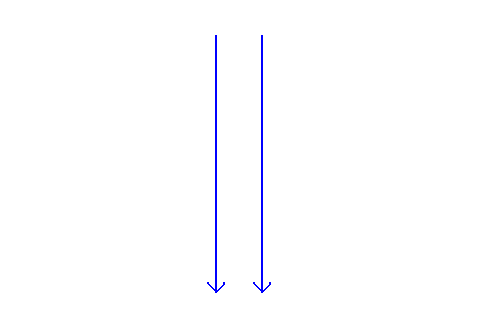 |
A human being is designed to pull, with hands that is, towards her/his body.
|
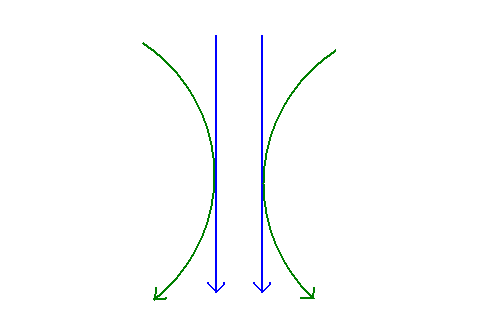 |
Because oars are hinged at oarlocks, the handle trajectories form
arcs of a circle.
If oar handles are apart in the middle of the pull, the end of the
pull turns away from the rower's body.
Not towards, as would be efficient.
|
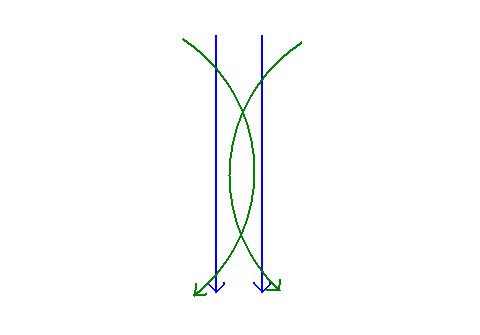 |
This can be overcome to at least some extent by overlapping the handles
at the middle of the pull.
|
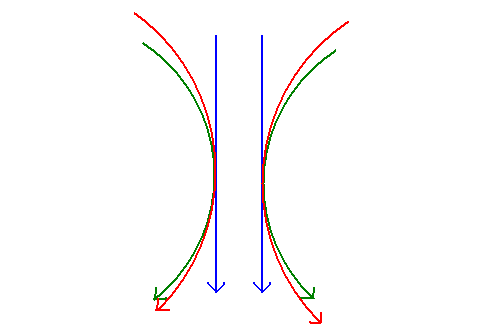 |
If the rower has longer reach, i.e. longer pull, due to a sliding seat
or longer arms...
|
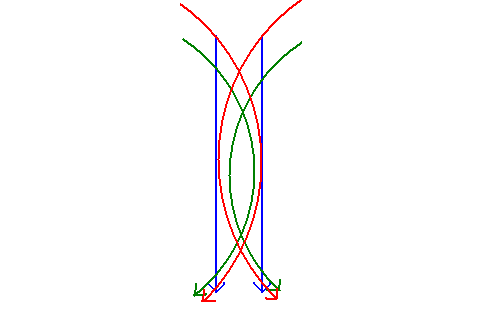 |
...the overlap in the middle of the pull needs to be more to bring the
end of the pull towards the rower.
|
In addition to improved pulling efficiency and comfort there are at least two
other things in favor of oar handle overlap:
- It is safer. With no overlap, but handle-ends close together there is
a real danger of Your fingers or other body parts getting caught between
oar handle ends and getting crushed. (With oarlocks that don't allow
in-out oar movement, that is.)
- It is handy to be able to hold both oars simultaneously
out of water with just one hand,
while attending to Your fishing gear, scratching Your head or picking Your nose.
What is an optimal amount of overlap?
Racers may and do use more, but in recreational rowing I'd say 4" to 6"
(10 cm to 15 cm) is optimal.
So what's the inboard length, then?
Since both oar handles overlap, half of the overlap comes from either
one of them. The inboard length is thus half of the beam plus half of the
overlap.
Oar efficiency
The oar efficiency at close to right angles to the boat is highest, as one might
intuitively guess.
Because of this, longer oars are more efficient. A greater proportion of their
travel during a sculling stroke takes place at close to right angles to the boat:
the most efficient range.
The figure below illustrates this point. With the same pulled distance (limited by the
rower's measurements and measurements of the boat), and same gearing, a long oar
(red) stays closer to right angles to the boat than a short oar (green).
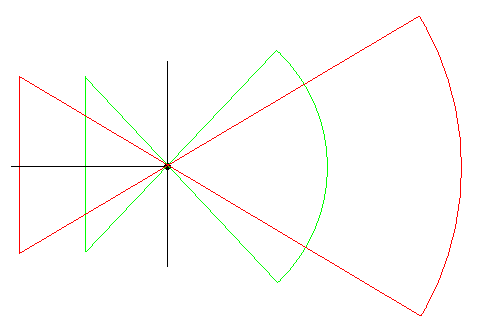
Also it is obvious from the picture that the effective (in the direction of
boat movement) distance moved by the oar blade is shorter with a short oar, if
the pull distance and gearing are the same.
The real-life situation is still worse for the short oar: it is likely that a rower
could not pull along the lines in the drawing. The rower would sit at the very left
edge of the drawing. He or she coud not pull the same distance with a short
inboard than with the long inboard, so the outboard end distance would be further
clipped.
Thus, long oars, long inboards, rule.
Good to know that oar efficiency is not in contradiction with rower efficiency
and comfort.
Oar handle overlap, that is!
Oar length
So far we've concluded that:
- Oar length = ( 1 + gearing ) * inboard length.
- A suitable gearing is 2.5 to 2.7.
- A suitable oar handle overlap is 4" to 6".
- Inboard length equals half of the beam plus half of the overlap.
Thus
oar length = ( 1 + ( 2.5 to 2.7 ) ) * ( half the beam + ( 2" to 3" ) )
Select a high gearing for rowing in calm weather and flat water, or for strong
rowers.
Select a low gearing for rowing in wind and waves.
Select a low overlap, if Your reach is short to normal. Select a high overlap
if Your reach is long. I.e. You have long arms and back, or a sliding seat.
Here are graphs of four gearing/overlap pairs calculated over a wide range of
boat beams:
- 2.5 gearing with 4" overlap.
- 2.7 gearing with 4" overlap.
- 2.5 gearing with 6" overlap.
- 2.7 gearing with 6" overlap.
These graphs should be sufficient for almost any boat and situation :-)
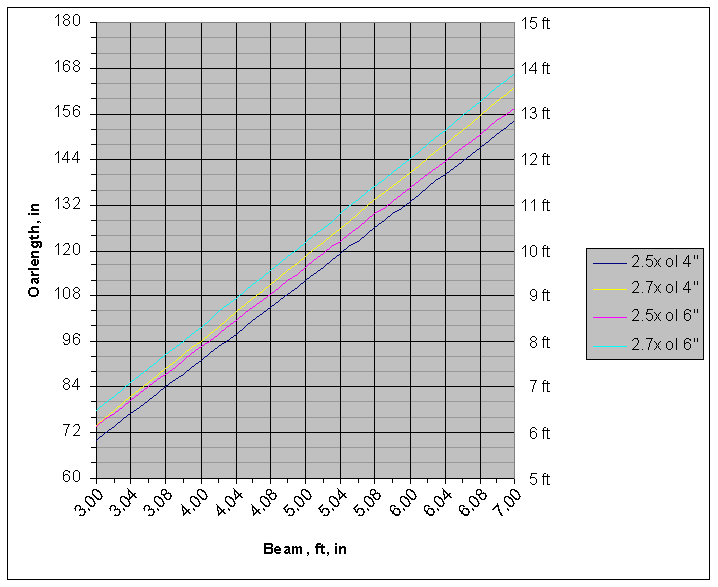
And the same in metric:

What do other sources say?
Not to claim that this is the whole truth and nothing but the truth, let's
see what other sources say.
- An old Scandinavian rule, used by Norwegian fishermen in the North
Atlantic fishing boats: Twice the beam.
I'll label this as 2xB in the following graphs.
- Another old Scandinavian rule: Twice the beam plus the handle.
I'll label this as 2xB + h in the following graphs, and take the handle
length to be 5" / 12.5 cm.
- Barkley Sound Oar
and Paddle Ltd say: 1/2 beam of boat in feet at oarlocks X 25/7.
I'll label this as 0.5xBx25/7.
- Bateau.com say
that West Marine say: 1/2 beam
(distance between oarlocks) x 3 + 6".
I'll label this as 0.5*B*3+6".
- Shawn &
Tenney say: Inboard length of the loom equals ½ the span between
the oarlocks + 2". Total length of oar equals 1/7 of inboard length
multiplied by 25.
I'll label this as (0.5*B+2)*25/7.
- Another Scandinavian rule: More than 1.75 times the beam, but less
than 1.9m times the beam.
I'll draw this as two lines, labelling them as 1.75*B and
<1.9*B.
- Rule from Finnish archipelago fishing boats: One and half times
the beam plus 12".
I'll lable this as 1.5*B+12.
I couldn't really find anything original in addition to this...
Let's see how these rules compare:
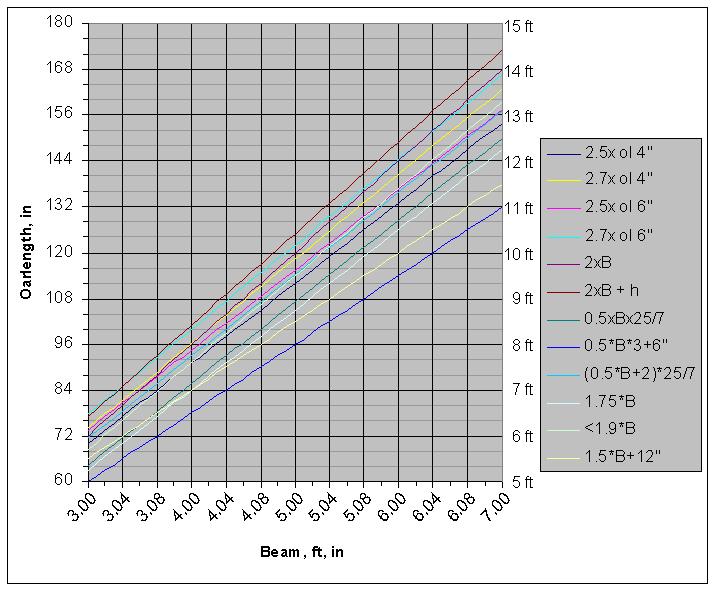
And the same in metric:
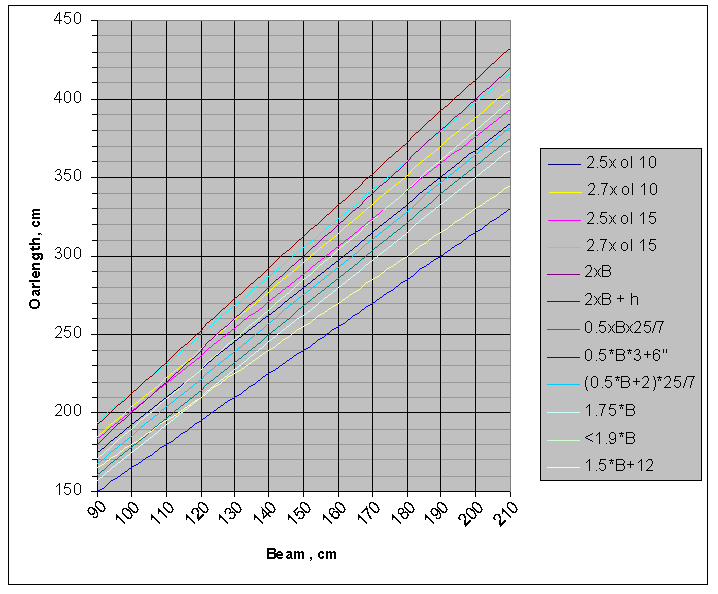
I'm sure all rules given here are sensible, have been used extensively,
and produce good oars.
So there's quite a choice. Just pick one.
Although... I would never go as short as the 0.5*B*3+6" rule indicates...
Top of the page.
Back to main page.












